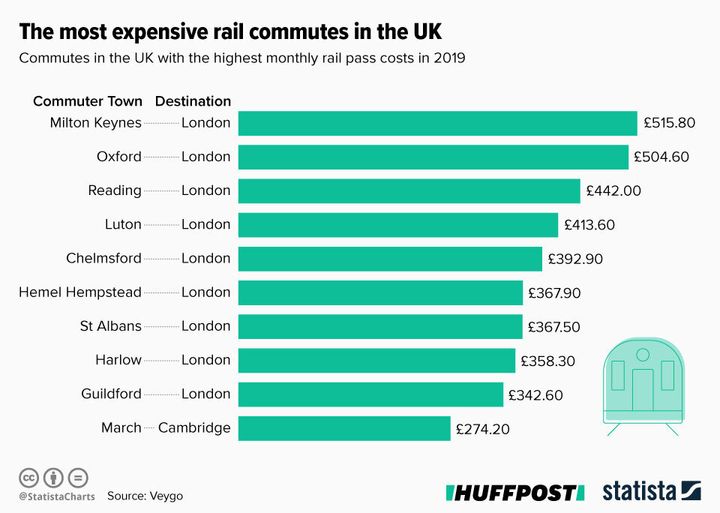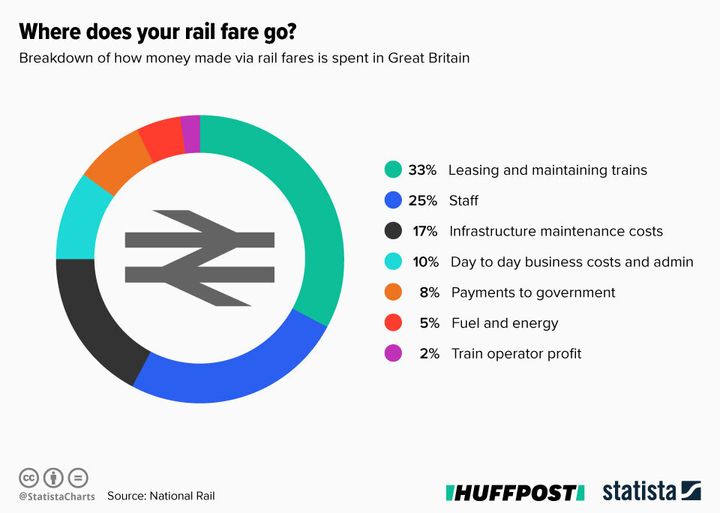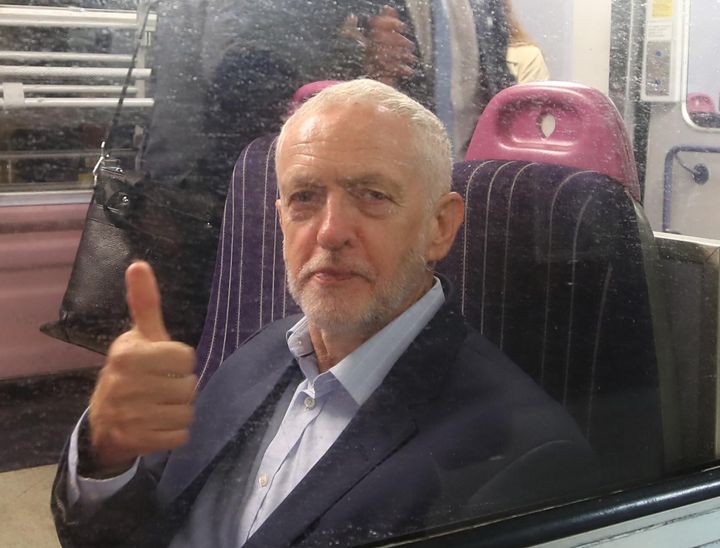With the notable exception of the 11.00 Virgin Trains service from London King’s Cross to Newcastle, Jeremy Corbyn loves trains – in fact, he said this week they are his “favourite way of getting around the country”.
So it seems fitting that Labour has announced a plan that could help more people to share his passion – by cutting the price of regulated rail fares in England.
On the face of it, it’s difficult to find fault – who’s going to turn their nose up at cheaper train fares?
But is it feasible? And if it is, why hasn’t anyone done it before?

What has Labour pledged?
Jeremy Corbyn has a long-stated ambition to re-nationalise Britain’s railways. If Labour comes to power, though, this would be a lengthy process as the party would likely have to wait for the existing private contracts to expire.
So in the meantime, they’ve announced plans to cut regulated rail fares by 33% from January 2020.
Children aged 16 and under would receive free rail travel under the party’s plans, while part-time workers would be guaranteed “fair” fares.
The party estimates the policy would save the average commuter more than £1,000 a year, and says it would represent the biggest ever reduction in rail fares.

What’s a regulated rail fare and how is it set?
About 40% of all fares are regulated. These include most commuter journeys, season tickets, some off-peak return tickets on long-distance journeys and some “any time” tickets between major cities.
They don’t include advance deals that operators offer.
Regulated train fare price increases are pegged to the Retail Prices Index (RPI) inflation measure for the previous July – which most recently was 2.7% (meaning that’s how much rail fares will go up by in 2020).

Pegging fares to the RPI is controversial as it is generally higher than the more commonly used figure for inflation, the Consumer Prices Index (CPI).
This effectively means that rail fare prices have increased more than the spending power of people’s wages.
Nicole Badstuber, a researcher at Cambridge University, told HuffPost UK: “The continued use of RPI in setting railway fare increases masks the government’s concerted attempt to make the rail passenger pay more of the cost of operating the railway – lightening the cost burden for government.
“The continued use of RPI, a discredited measure of inflation – gives these rail fare increases a false validity, an illusion of fares only increasing with the cost of inflation.
“The government has chosen to raise regulated fares at rates above inflation – another government could choose not to.”
Where does a rail fare go?
Despite the high prices, only about 2% of a regulated train fare goes into the pockets of private train operators.

This means any substantial cut in fares will effectively have to be subsidised by the government.
Where is Labour going to get the money from?
Labour estimates that the policy will cost £1.5bn per year and would come from existing Department for Transport budgets, drawn from Vehicle Excise Duty, meaning there would be less money for fixing road transport issues such as potholes, the scourge of many a British driver.
But given the current concern of climate change, this might not be a bad thing at all.
Bruce Williamson from the campaign group Railfuture told HuffPost UK: “We would naturally prefer investment be made into railways than into roads. After all, with the climate emergency, rail transport is a very environmentally friendly form of transport, much more so than road transport.
“It seems madness to be building roads and reducing the cost of motoring, which will only increase pollution from road vehicles.”

Is this a feasible plan?
Responding to the announcement, transport secretary Grant Shapps didn’t specify which bit of the plan wouldn’t work but instead called it “another desperate attempt [...] to distract from their inability and unwillingness to be straight with people on where they stand on Brexit”.
Shapps added: “His ideological plans would wreck our economy, cost people their livelihoods and, with the help of Nicola Sturgeon, would waste the whole of next year on two more chaotic referendums.”
But how does it look outside the prism of pre-general election mud-slinging?
“It’s undoubtedly a feasible plan,” says Williams. “You only have to look at our European counterparts, where they have on the whole considerably lower fares.”
A BBC Reality Check in August supported Williams’ claim, concluding: “The UK has some of the most expensive tickets in Europe if bought on the day of travel but some of the cheapest tickets if bought far enough in advance.”
Ultimately, where the burden of the cost of rail fares falls is up to the government, and there is a strong argument that this should be moved away from the passenger.
“The concerted effort from national government to shift the burden from one on government to one on the passenger demonstrates a lack of acknowledgement of the widespread benefits of rail to all, both passengers and those not directly using the service,” says Badstuber.
“Such benefits include improved air quality, congestion relief and the feasibility of high capacity employment hubs.”
Why hasn’t it been done before?
A big part of the reason is simple supply and demand – travelling by train is a necessity, particularly in the ever-expanding commuter belt around London, so there’s been no commercial need for anyone to make it cheaper.
“This is part of a deliberate long-term policy on the part of the government,” says Williams.
“A Tory government doesn’t like any sort of public subsidy and their capitalist fantasy is that the railways can be made to pay for themselves, so what they’ve been doing is gradually increasing the proportion of the cost of running the railways, which is on fares, and reducing the subsidy at the same time.
“And they’ve got away with it because passenger numbers continue to rise. They’ve more or less doubled in the last 20 years or so and whilst passenger numbers continue to rise, they can get away with it.”

Are there any negatives in the plan?
Making train travel more attractive and affordable is all very good but overcrowded trains are already an everyday experience for many.
“Any promise of rail fare reductions must be accompanied by large-scale investment in the system to maintain good, reliable and frequent [services],” Badstuber says.
“There is a risk that already busy services will not be able to accommodate the many passengers attracted to the rail service by reduced services.”
Labour could provide the necessary investment as part of its plan to massively increase borrowing, but this has its own risks – a rise in interest rates could see the UK saddled with spiralling debt.
Then there is the issue of the north-south divide. Northern parts of England aren’t as well serviced by the rail network as the south, particularly around the capital.
Who is against it?
A spokesperson for the Rail Delivery Group, commenting on behalf of train operators, was cautious about the plan, arguing that operators had “been calling for some time for changes in regulation” but it is “a red herring to suggest that reforming fares needs a change of ownership”.
They added: “Train companies would obviously support a reduction for passengers as long as it is funded on an ongoing basis so that investment to improve the railway can continue.”
